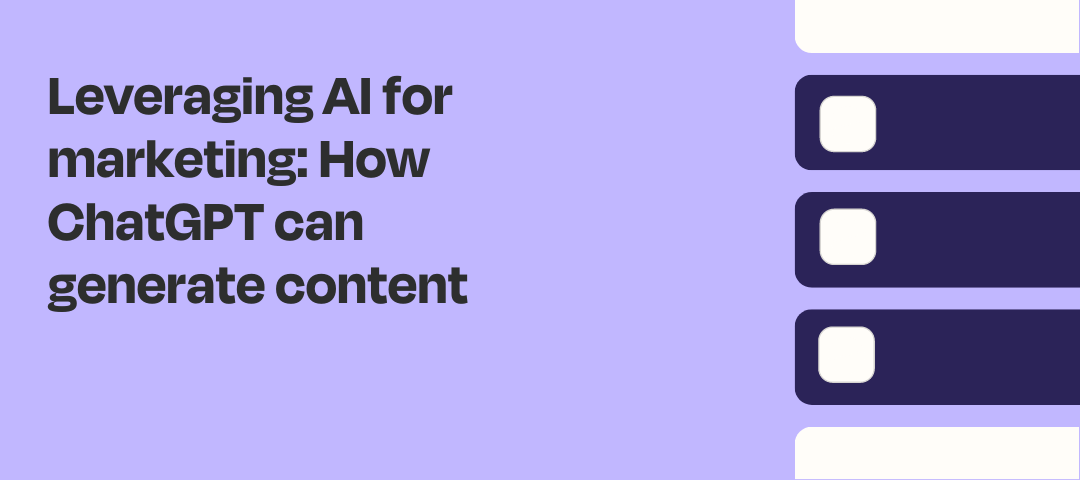TL;DR: In this article, we explore how AI, specifically ChatGPT from OpenAI, can be used for Ads and Marketing purposes. It can help generate content for social media engagement, blog and website content, book descriptions and blurbs, and email campaigns. However, reviewing and editing the generated content is critical to align with brand and messaging.
This article is for you if:
- You are looking to use AI to help you create content
- You are trying to establish the use of AI in your everyday workflow
In my last post, we discussed using AI to help write content using the appropriate voice and tone. Today, we’ll dive a little deeper into the topic, and hone in on using it for Ads and Marketing.
We’ll continue with the persona of a content creator, in this case an author marketing a book. If you haven't already, I’d recommend taking a quick peek at the tone and voice article. It will serve as a great introduction to prompting ChatGPT. While the scenario we are using for this case study is an author, remember that the information shared here today, is transferable to practically any business.
Types of Marketing Content ChatGPT Can Help With
ChatGPT/OpenAI can assist with social media engagement, blog and website content, book descriptions and blurbs, and email campaigns. It’s important to remember that you should always review and edit the content generated by ChatGPT. While ChatGPT can be a valuable tool to generate content ideas and create drafts, using your voice and style in your marketing efforts is important. Your voice is your brand!
Social Media Engagement
Get creative with your book promotions on social media! Try using excerpts from your book generated by ChatGPT to create engaging content that will captivate your followers. Share quotes, teasers, or fascinating facts to excite curiosity. It's an easy and fun way to generate buzz among your audience. For this example, I’ll be using popular fantasy novel Mistborn by Brandon Sanderson, requesting ChatGPT produce an Instagram post promoting the book.
My entry:
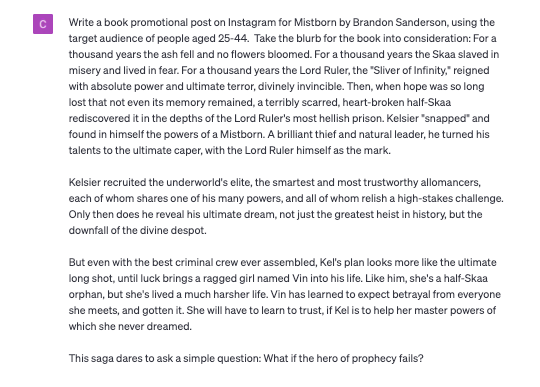
The Final Result:
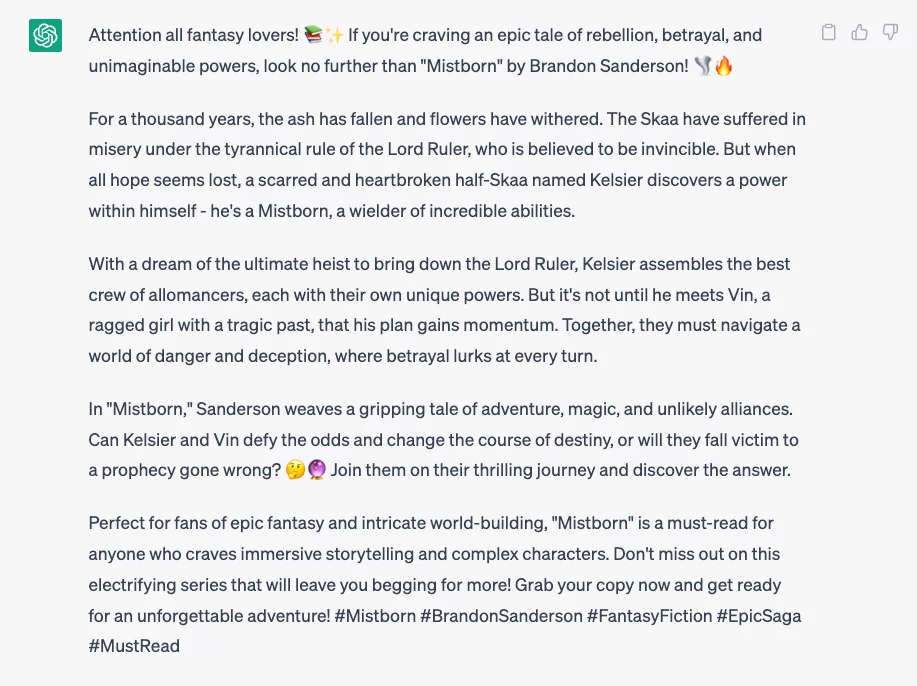
Pretty solid. It even produced appropriate hashtags to heighten the visibility of the post.
Blog and Website Content
You can use ChatGPT to generate blog posts or website content related to your book's genre, themes, or characters. This can help you create fresh and relevant content that attracts readers to your website or blog. For instance, you can ask ChatGPT to generate articles related to your book that you can publish on your author website or blog. Again, I used Mistborn by Brandon Sanderson:
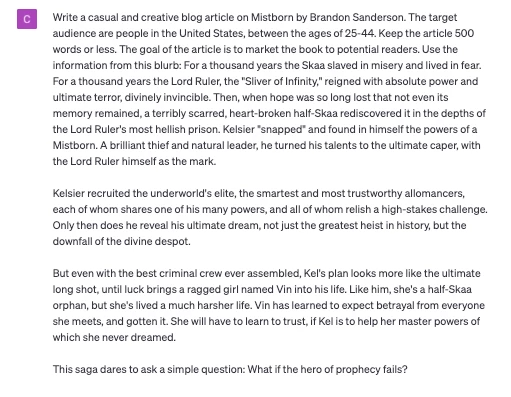
My instructions to ChatGPT were clear and concise. I made sure to use guiding language to coach AI towards the appropriate tone to take.
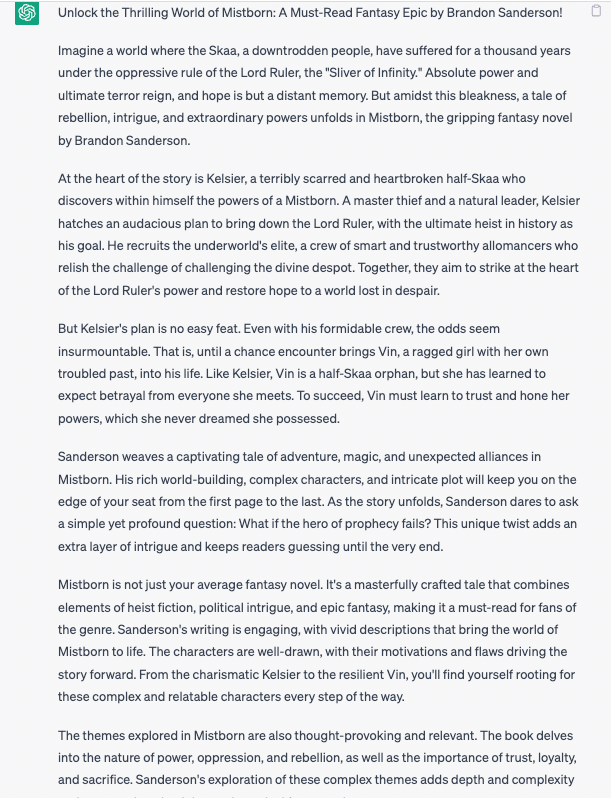
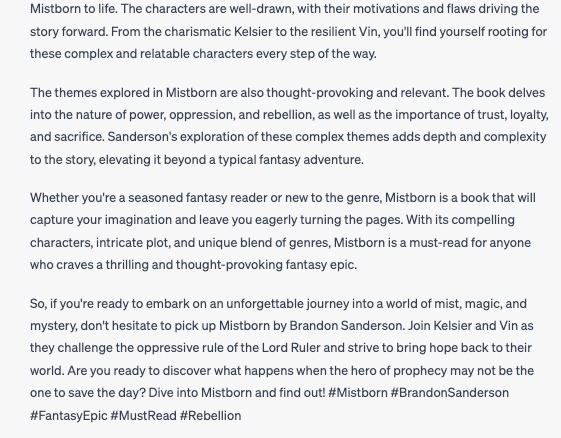
This was good, but it's a little lengthy and includes unnecessary hashtags. It's a great start and a few minor edits could help improve the readability.
Book Descriptions and Blurbs
ChatGPT can help you generate catchy and compelling book descriptions and blurbs. You can provide key information about your book, such as its genre, main characters, and setting, and ask ChatGPT to generate a creative, attention-grabbing book description or blurb. This can be used in your book's marketing materials, such as on your book cover, website, or book listing on online retailers.
Let’s have some fun with this one, I will make up a general plot and see what ChatGPT can put out. If it grabs your attention, let us know in the comments below!

I was all too curious to see what it could do with such minimal information.
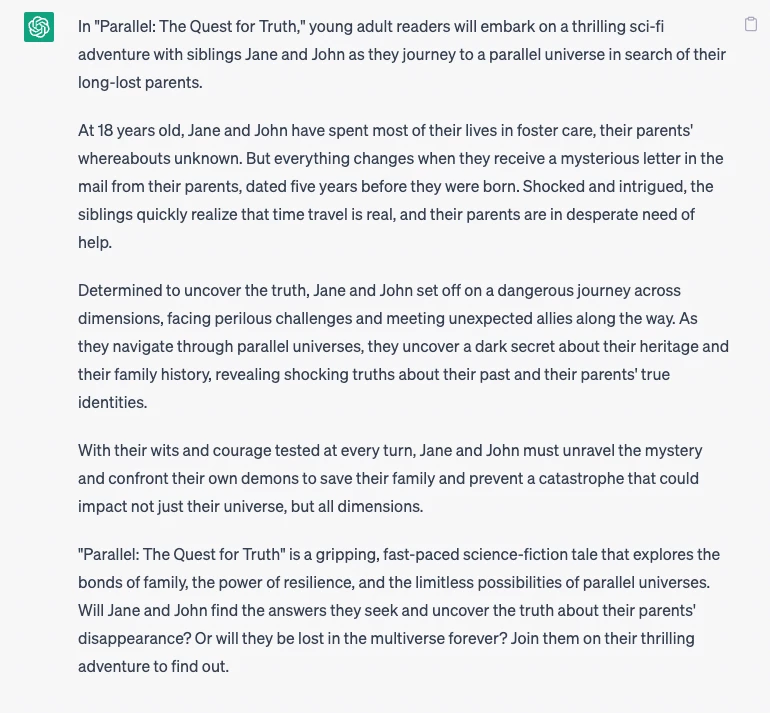
I’m super impressed, it even gave me a title.
Email Campaigns
ChatGPT can help you generate personalized emails for your book launch or promotional campaigns. You can ask ChatGPT to generate email templates or drafts that you can customize and send to subscribers or potential readers to your mailing list. Personalized and engaging emails can help you build a connection with your audience and generate interest in your book.
Here’s my input:

And now, what I got when I tried this out:
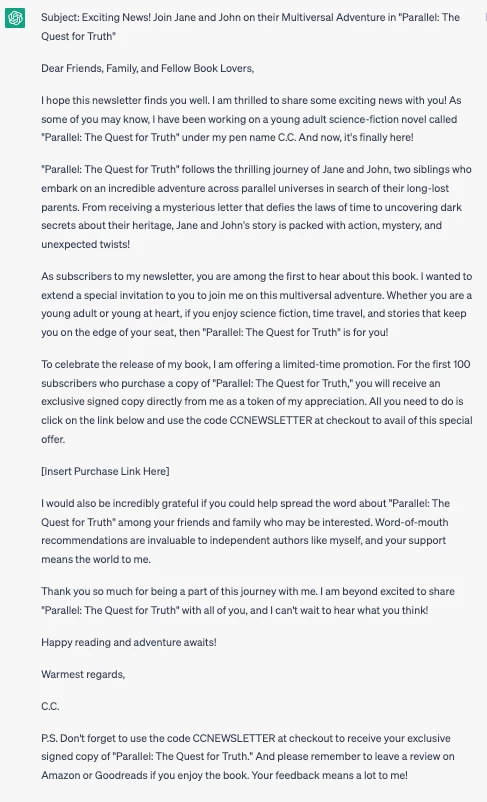
It’s a little formal, and the tone isn’t all that great. But we asked for a template, and that’s what it gave us! It truly pushes the point that at the end of the day, AI is a tool to use towards a final product.
A Zap to Send It Off
In the next article of this series, we’ll take a look at everything we’ve learned this far, and compile it into a Zap. Have any recommendations on Zaps to accompany these workflows? Leave it in the comments below and you may find it featured soon! 👋

